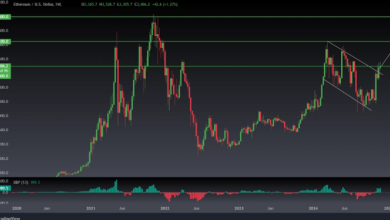Unlocking Insights with Customer Journey Analytics

In today’s data-driven marketing landscape, understanding the customer journey is essential for delivering experiences that resonate and drive results. Customer journey analytics, a powerful approach that leverages data to map and analyze every interaction a customer has with a brand, offers businesses unparalleled insights into behaviors, preferences, and pain points. By examining touchpoints across awareness, consideration, purchase, and retention stages, marketers can optimize strategies to enhance engagement, conversions, and loyalty in both B2B and B2C contexts. This article explores how customer journey analytics unlocks actionable insights, detailing its mechanisms, benefits, and strategic applications for businesses aiming to thrive in a competitive environment.
Illuminating the Path of Customer Interactions
Customer journey analytics provides a comprehensive view of how customers engage with a brand across multiple channels, such as websites, emails, social media, and in-person interactions. Unlike traditional analytics, which often focus on isolated metrics like click-through rates, journey analytics synthesizes data to reveal the full path from initial awareness to long-term loyalty. This holistic perspective is critical for understanding the nuances of customer behavior.
For example, a B2C retailer might use journey analytics to track a shopper’s path from a Google ad to a website visit, followed by an email interaction and a purchase. In B2B, a software vendor could analyze how a prospect moves from a LinkedIn post to a webinar, then a sales call, and finally a contract signing. By mapping these interactions, businesses uncover patterns—such as which touchpoints drive engagement or where drop-offs occur—enabling targeted improvements that enhance the customer experience and drive outcomes.
Harnessing Data for Actionable Insights
The strength of customer journey analytics lies in its ability to integrate and analyze vast datasets from diverse sources, including CRM systems, website analytics, and social media platforms. This data convergence provides a unified view of customer interactions, revealing insights that inform strategic decisions.
Quantitative data, such as time spent on a website or email open rates, highlights behavioral trends. For instance, a B2C brand might notice high cart abandonment rates, indicating friction at checkout, while a B2B vendor could see prolonged engagement with technical content, suggesting a need for detailed resources. Qualitative data, gathered through surveys or feedback forms, adds context by uncovering motivations and frustrations. A B2C shopper might express a preference for fast delivery, while a B2B client could highlight the importance of responsive support.
By synthesizing these insights, marketers can identify high-impact touchpoints and areas for improvement. For example, a retailer might streamline its checkout process to reduce abandonment, while a vendor could develop more technical whitepapers to support B2B decision-making. This data-driven approach ensures strategies are grounded in real customer behaviors, maximizing their effectiveness.
See also: 5 Key Benefits of Hiring Steel Fabrication Services
Mapping Touchpoints to Optimize Engagement
Creating a customer journey map is a foundational step in leveraging analytics to boost engagement. This map visualizes every touchpoint across the journey’s stages, providing a clear framework for analysis. In the awareness stage, touchpoints might include social media ads or search queries, while consideration involves product pages or webinars. The purchase stage includes checkout processes or contract negotiations, and retention covers follow-up emails or support interactions.
For instance, a B2C brand might map a shopper’s journey from a TikTok ad to a website visit, a cart abandonment email, and a loyalty program signup. A B2B vendor could chart a prospect’s path from a LinkedIn campaign to a demo request, a proposal review, and an onboarding session. Analytics tools analyze performance metrics at each touchpoint, such as click-through rates or conversion rates, to identify what drives engagement and where barriers exist.
This mapping process highlights opportunities to optimize. A B2C retailer might find that personalized emails increase conversions, while a B2B vendor could discover that streamlined demo scheduling reduces drop-offs. By aligning strategies with these insights, businesses enhance engagement at every stage, driving stronger connections with customers.
Personalizing Experiences with Precision
Personalization is a key driver of customer engagement, and journey analytics enables marketers to tailor experiences with precision. By analyzing behavioral and demographic data, analytics tools identify what resonates with specific audience segments, allowing for customized touchpoints that boost relevance and impact.
For example, a B2C retailer might use journey analytics to discover that younger shoppers respond to vibrant social media ads, while older customers engage with email promotions. This insight could lead to targeted campaigns, such as dynamic website content for millennials or discount-driven emails for seniors. In B2B, analytics might reveal that IT managers prioritize technical details, prompting tailored whitepapers, while CFOs value ROI-focused content, leading to customized proposals.
AI-powered analytics enhance personalization by predicting customer preferences and automating content delivery. For instance, a B2C brand could trigger personalized product recommendations based on browsing history, while a B2B vendor might send a tailored case study after a prospect attends a webinar. By delivering relevant experiences, journey analytics drives engagement and fosters loyalty, making personalization a cornerstone of effective marketing.
Identifying and Resolving Pain Points
Customer journey analytics excels at uncovering pain points that hinder engagement, such as complex purchase processes or irrelevant content. By analyzing drop-off points and customer feedback, businesses can pinpoint barriers and implement targeted solutions.
For instance, a B2C retailer might notice high abandonment rates at checkout, indicating a need for a simplified process or clearer pricing. Analytics could reveal that adding a progress bar increases completions, boosting conversions. In B2B, a vendor might find that lengthy sales cycles deter prospects, prompting streamlined contract tools or faster response times. Customer feedback, such as survey responses or support tickets, provides qualitative insights to validate these findings.
Testing solutions is critical. A/B testing can compare different touchpoints, like two checkout designs or email follow-up strategies, to determine what resolves pain points effectively. By addressing these barriers, businesses create smoother journeys that enhance engagement and drive retention, ensuring customers remain connected to the brand.
Integrating Analytics with Marketing Strategies
To maximize the impact of customer journey analytics, businesses must integrate it with broader marketing strategies. Data from journey analytics should inform campaigns across channels, ensuring consistency and alignment. For example, a B2C brand might use insights from email engagement to tailor social media ads, while a B2B vendor could align webinar content with sales pitches based on analytics data.
Integrated platforms, like CRM systems or marketing automation tools, facilitate this alignment by providing a unified dataset. A B2C retailer can track email clicks to personalize website content, while a B2B vendor uses CRM insights to align email nurtures with account management touchpoints. Regular audits ensure messaging consistency, preventing disjointed experiences that could erode trust.
Cross-functional collaboration is also key. Marketing, sales, and customer support teams should share analytics insights to create cohesive strategies. For instance, a B2C brand might align marketing’s email campaigns with support’s post-purchase follow-ups, while a B2B vendor coordinates sales and marketing to streamline prospect journeys. This integration ensures analytics drives holistic, customer-centric marketing efforts.
Measuring Impact to Drive Continuous Improvement
Customer journey analytics is not a one-time exercise—it requires ongoing measurement to sustain engagement and drive results. Key performance indicators (KPIs), such as conversion rates, retention rates, or customer satisfaction scores, provide a clear view of how the journey performs. A B2C retailer might track repeat purchase rates to assess loyalty campaigns, while a B2B vendor monitors demo-to-contract rates to evaluate sales efficiency.
A/B testing refines specific touchpoints. For example, testing two email subject lines can reveal which drives higher opens, while comparing website layouts can reduce bounce rates. Customer feedback, gathered through surveys or support interactions, complements these metrics, offering qualitative insights into what resonates.
Regular journey map updates—quarterly or biannually—ensure analytics reflect evolving customer behaviors. A B2C brand might adapt to increased mobile usage, while a B2B vendor incorporates virtual demo insights. This iterative approach keeps strategies aligned with customer needs, driving continuous improvement in engagement and outcomes.
Adapting to Emerging Trends and Technologies
Customer journey analytics must evolve with changing market dynamics, such as new technologies or shifting customer expectations. Emerging trends, like AI-driven personalization or immersive platforms like augmented reality (AR), reshape how customers interact with brands. Analytics tools can track these trends, ensuring strategies remain relevant.
For instance, a B2C retailer might use analytics to identify growing engagement with AR product previews, prompting tailored website experiences. In B2B, a vendor could analyze increased demand for virtual consultations, leading to optimized webinar touchpoints. Customer feedback, gathered through social listening or surveys, reveals preferences like sustainability or faster response times, guiding adaptations.
AI enhances analytics by predicting future behaviors and automating insights. For example, AI can forecast which touchpoints will drive engagement, enabling proactive campaign adjustments. By staying adaptable, journey analytics ensures businesses remain agile, delivering experiences that resonate in a dynamic landscape.
Building Lasting Customer Relationships
Customer journey analytics unlocks transformative insights that empower businesses to create engaging, customer-centric experiences. By mapping touchpoints, leveraging data, and addressing pain points, marketers can optimize every stage of the journey to drive engagement and loyalty. Personalization, integration, and continuous measurement amplify these efforts, while adaptability ensures alignment with emerging trends.
For businesses, journey analytics is a strategic tool that fosters deeper connections with customers, turning one-time interactions into lasting relationships. By harnessing its power, marketers can navigate the complexities of modern marketing, delivering experiences that captivate, convert, and sustain loyalty in an increasingly competitive digital world.


